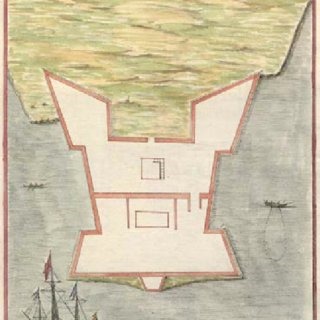Back in 1328 the land was compacted for the construction of the castle of Benidorm. It is
known that the prior of the Augustinians of the time indicated that the convent founded by
Bernat de Sarriá should be built next to the walls. It is not known if the work was underway in
1328, but it was at that time.
The castle of Benidorm was built around 1320 and was renovated around 1650 by Antonelli. At
that time, it was very difficult to build, because they had to transport the material, rock, wood,
iron of the nails (since the screw was not invented until the sixteenth century, this is known
why nails have been found in the excavations and not screws) and especially the labor that
was scarce at that time, because of the low population of Benidorm that, did not reach 50
inhabitants in 1380.
This castle did not last long, it was assaulted by the “pirates” of Africa in 1388 and the
neighbors took refuge in the neighboring town of Polop, leaving the heart of Benidorm
abandoned. Later on, Benidorm became part of Polop, being this a fishing district of Polop,
where the fishermen went in spring to fish for tuna with the trap technique.
Almost 300 years later, with Beatriz Fajardo de Mendoza, in a town that had been absorbed by
Polop and uninhabited by the Germanias war, she inherited the land that barely had any
income, since it was depopulated, with houses in ruins, destroyed walls and with a shortage of
water that prevented agriculture, which was fundamental for that time.
Beatriz, with an entrepreneurial attitude, made investments to make her estate profitable by
creating the Riego Mayor de Alfaz giving water to all these villages. Thanks to Beatriz we can
say that Alfaz del Pi, Benidorm and even La Nucia became a municipality by encouraging its
inhabitants to create vegetable gardens, run mills and water their livestock.
In 1666 this investment was completed by establishing the legal basis of Benidorm with the
“Carta Puebla”, creating an independent municipality of Polop with a new municipal district
different from the medieval one and with its organs elected by the inhabitants.

Today, on the sides of the viewpoint, the glass walls allow “seeing” where the walls used to go,
fallen into the sea that marks the dipping of the strata. In the windows of the floor, you have
the mother rock (very inclined) and in the steps of ascent to the tower (there is no tower
anymore), you can see the walls, moat and areas of the cistern with watering place.
Remains from the 14th to 19th centuries have been found. After the war 1808-1812 the castle
was abandoned and collapsed around 1837.
As you descend the stairs, to the balcony of the Mediterranean is the replacement, it is the
base of a watchtower that now has a Wind Rose with local landmarks, names of winds and
native fauna. The current pergola corresponds to the parade ground of the castle, all the
rooms of the castle were facing it (the opposite of now).

(Historia de Benidorm, de los orígenes a 1960. AMILLO ALEGRE, FRANCISCO)





